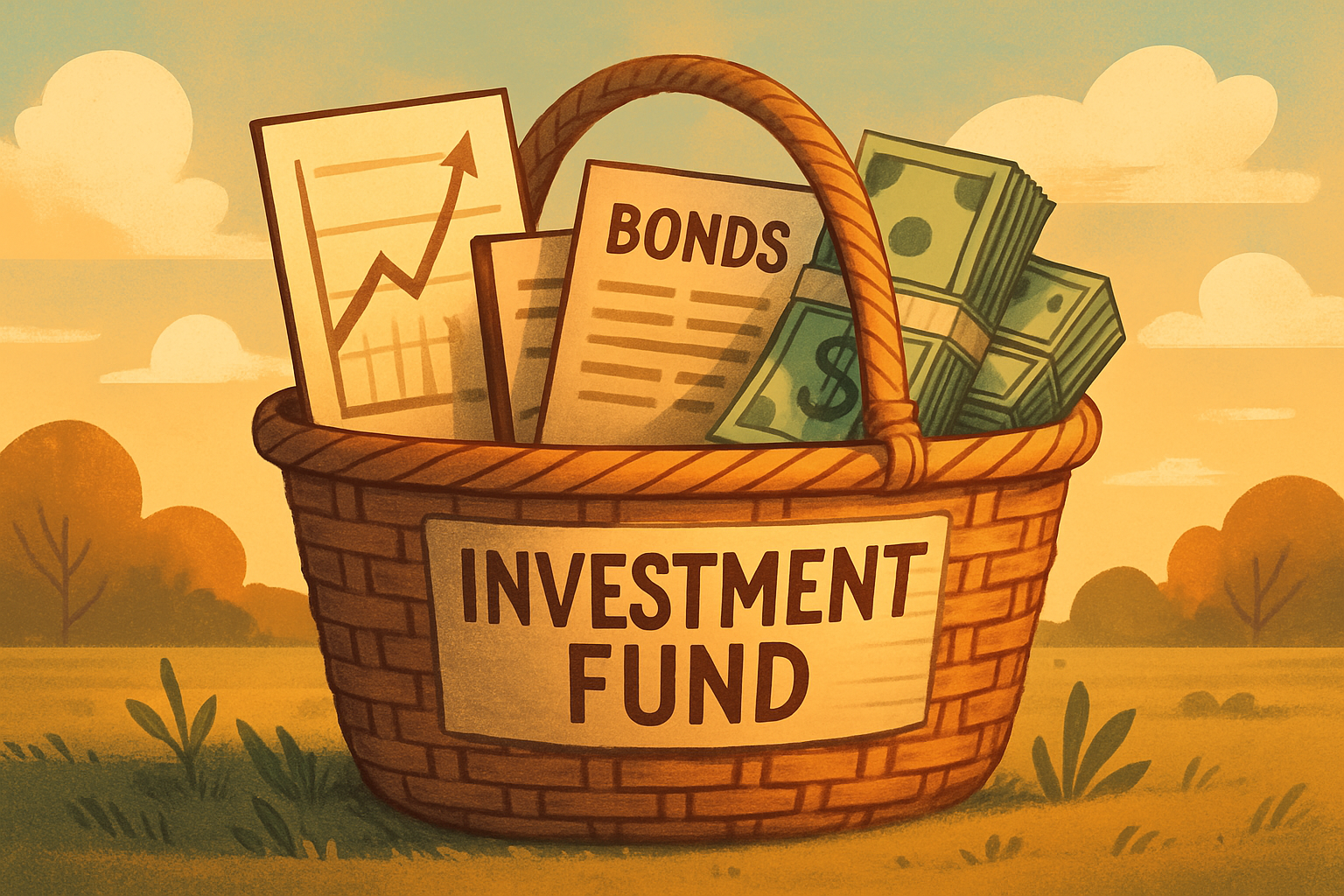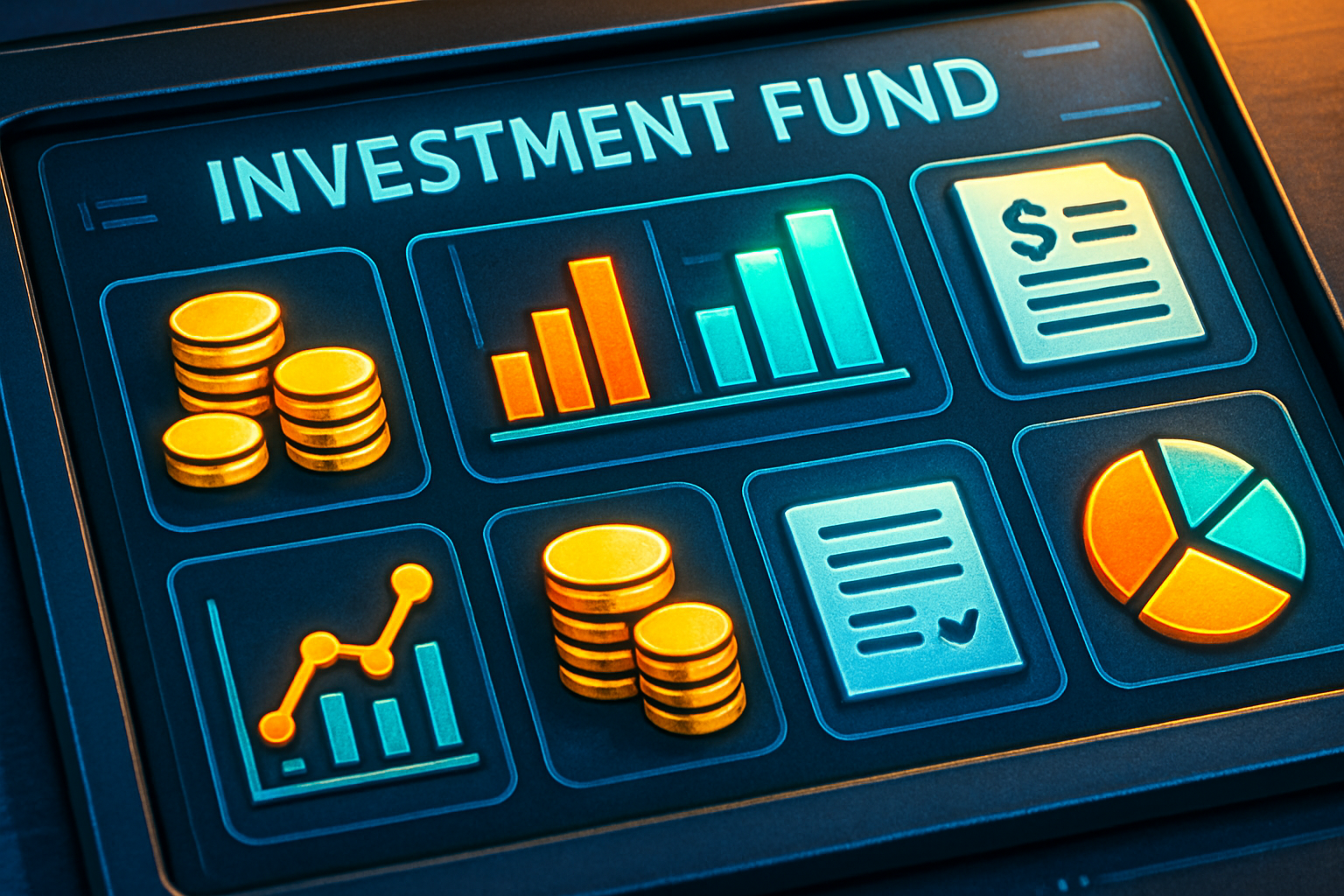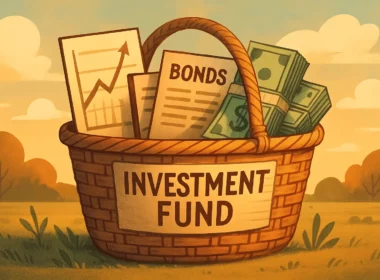Table of Contents

Key Highlights
- Investment funds pool money from numerous investors to create a diversified portfolio, reducing individual risk.
- The net asset value (NAV) represents the value of the funds’ holdings and determines share prices for investors.
- Fund managers handle purchasing and selling securities, crafting investment strategies aligned with fund objectives.
- Various types of investment funds include mutual funds, hedge funds, index funds, and more, catering to different investor needs.
- Management fees and operating expenses influence the fund’s overall cost and potential returns.
- Investors leverage funds for extensive exposure to markets while minimizing costs and decisions.
Transitioning next, let’s elaborate on what investment funds are and how they impact your personal finance decisions.
Introduction
An investment fund is a great way for people to manage their personal finance. It lets people bring their money together to get more chances for growth. By joining an investment fund, you can be in a diversified portfolio without having to buy each stock or bond one by one. This helps lower risk if any one part of the market goes down.
It does not matter if you are new to the market or have done this for some time. Investment funds make it simpler to get started and grow your money with help from people who know what they are doing. Now, let’s look at how these funds work, the different types you can find, and how important they are for your future with money.
Understanding Investment Funds
 Investment funds make it easy to get into the market by joining money from numerous investors. Because of this, people can have a piece of many kinds of securities, and they do not need a lot of money to get started. Investors keep ownership of their own shares, but fund managers handle the investment strategy.
Investment funds make it easy to get into the market by joining money from numerous investors. Because of this, people can have a piece of many kinds of securities, and they do not need a lot of money to get started. Investors keep ownership of their own shares, but fund managers handle the investment strategy.
Funds hold a mix of investments that match certain goals. They help people reach many financial targets. With this organized system and professional management, investment funds are a top choice for many potential investors. Next, we will talk about some key ideas that shape these funds in detail.
Definition and Core Concepts
At its core, an investment fund is a pool of money that comes from numerous investors. This money is put together so people can buy different assets as a group. With this setup, investors can put their money into funds they may not be able to buy on their own. All investors keep their own shares, but professional fund managers make the choices about what to buy or sell.
The net asset value (NAV) shows the total value of everything the fund owns. It helps figure out the share price for everyone in the fund. When the value of the assets goes up or down, the NAV changes too. This can make the return for investors go up or down as well.
Every investment fund holds different things in its portfolio. These might be stocks, bonds, or things like derivatives. Some funds are wide in what they cover, such as an index fund that follows the S&P 500. Others are more specific, like an ETF that invests only in technology stocks. Because of this, investment funds work for many kinds of people. This mix gives a balance of risk and possible growth. It is this simple structure that helps investment funds attract investors from all walks of life.
The Role of Investment Funds in Personal Finance
Investment funds are important in personal finance. They help people reach big money goals, like having a good retirement plan or getting a steady income. You can use these funds to spread your money across different sectors. This means you do not need a lot of money or deep know-how to get started.
With a diversified portfolio, the risk of losing money to market ups and downs can go down. This way, people can look for steady growth or income. The plan can work for different risk levels.
Many people say the rate of return is key for success in investing. Professional managers often do better than those who invest on their own. They know how to work with changes in the market and follow key benchmarks too. As you keep going, take time to know the different types of funds so you can pick what fits your needs best.
Types of Investment Funds
 Investment funds come in different types. Each type fits a different money goal. Mutual funds are still a favorite with many people. They put people’s money together to buy stocks or bonds. Some are managed by people, and some follow rules.
Investment funds come in different types. Each type fits a different money goal. Mutual funds are still a favorite with many people. They put people’s money together to buy stocks or bonds. Some are managed by people, and some follow rules.
Hedge funds are made for people who have more experience with money. These can be risky, but people might get higher returns. There are more things you can invest in with hedge funds.
Index funds copy the market, like the S&P 500. These usually cost less to use. Exchange-traded funds (ETFs) are good for people who want to be able to buy or sell during the day.
If you know about these types of funds, it will help you pick the right one for your goals. You will be better able to plan for what you want.
Mutual Funds vs. Exchange-Traded Funds (ETFs)
Mutual funds use a pooled investment strategy. This means many individual investors put their money together. The money is managed by professionals. People can get a diversified portfolio that may include stock and bond funds.
On the other hand, exchange-traded funds, or ETFs, work in a different way. ETFs trade on exchanges just like stocks. This type of fund lets you buy or sell at any time during the trading day. You get real-time pricing and more flexibility.
Both types of funds are different. Mutual funds usually have more active management. ETFs often use a passive investment strategy. The way these funds are managed can change how well they do. It can also affect annual operating expenses. That is why potential investors should think about their own goals when choosing between these types of funds.
Hedge Funds, Index Funds, and Other Fund Structures
Hedge funds come with more risk and have limits on who can invest in them. They work under set rules like limited partnership agreements. Hedge funds often put money into things like derivatives, commodities, or borrowed assets, which can make them more aggressive.
Index funds try to match big stock indexes. This gives people an easy way to invest and helps keep costs low. Trust funds help manage assets that come from estates or are used for charity.
Other types of investment choices are:
- Unit investment trusts, which hold certain assets for a set time.
- Private equity funds, which own parts of companies.
- Venture capital funds, which help new businesses grow.
Knowing about the types of investment structures helps people choose a fund that fits their goals and the level of risk they want to take.
How Investment Funds Work
An investment fund works by putting together a pool of money from many investors. This lets people take part in different securities and have a fund manager to look after their money.
The fund manager gets help from an investment adviser. They pick what to buy, keeping in mind what the fund wants to get done. Some investment funds want to grow fast, while others are more steady. The fund manager’s job is to watch for risks and try to get good results for everyone. Up next, we talk more about how putting money together can help and why diversification matters.
Pooling Capital and Diversification
Investment funds work by putting the money from many potential investors into a single pool of money. This method lets the fund buy many types of assets, which helps create a diversified portfolio. With a diversified portfolio, risks from changes in the market can be reduced.
If you have assets in different areas, you will not put everything into one place, like in technology stocks, which can go up and down at times. The number of shares in a fund goes up or down when people add or take out their investments. This helps to keep the portfolio steady.
This way, numerous investors are able to join in and get broad exposure, even if they invest small amounts. Diversification is central to keeping the money safe and getting better returns over time. Skilled managers take care of the fund for all of us.
Professional Management and Fund Objectives
Behind every successful fund, you will find a fund manager. He is the one who guides the investments to meet the goals that have been set. This means following the investment strategy agreed on in the investment management agreement.
A fund manager will look at risks and keep track of how the fund is doing using a benchmark index. He tries to get better returns, and by doing this, helps people grow their money to meet their own goals.
Professional oversight makes sure that funds can deal with market changes. At the same time, it protects what investors have, and the interests they share. This type of management helps reach long-term steadiness in portfolios that are made up of many different things.
Open-End vs. Closed-End Funds
Open-end funds let people buy or sell shares at the net asset value on any day. When someone puts in money, the fund makes new shares. When someone wants out, their shares are taken back. This makes it easy for people to get in or out when they want.
On the other hand, closed-end funds give out a set number of shares. These shares trade on an exchange, not from the fund itself. The share price can end up being quite different from the net asset value. The way these two funds work is not the same. It can change liquidity and what returns people get, all depending on how many shares are out there and what people think those shares are worth.
Key Differences in Structure and Liquidity
Investment structures can be very different, and this can change how easy they are to get and how well they do. Mutual funds usually work by collecting money from many people. These are called numerous investors. The mutual fund then offers shares to these people at the net asset value. This is done at the end of the trading day.
On the other hand, exchange-traded funds (ETFs) trade on the stock market, much like normal stocks. This means you can buy and sell them right away during the trading day.
There are some differences with liquidity too. Mutual funds can set limits if you want to take your money out. But ETFs let you do transactions whenever the market is open. This gives more freedom to individual investors who like to manage their own money more often.
Pros and Cons for Investors
Investing in mutual funds can be a good choice for new investors. You can get the help of professional management and own a diversified portfolio. This can help lower risk. Over time, the lower expense ratios can give you a better return.
But potential investors should also think about some things before they get in. There are management fees and possible capital gains you might have to pay, especially with funds that are managed more often. The market conditions will always have an impact on how your money grows. If you choose ETFs, their changing share prices can make things a bit more complex for individual investors. So, it is good to look at both sides before you make your move.
Fees, Charges, and Costs
Investment funds come with many fees, charges, and costs. These can lower the returns you get. The management fees and expense ratios are listed in the fund’s documents so people can see the cost to run a diversified portfolio. There are also sales loads and redemption fees. These can take away from the net asset value when you buy or sell shares.
It is important for potential investors to know about these costs. This helps you make better choices when picking the type of fund that fits your investment strategy and the time you want to stay invested.
Understanding Management Fees and Expense Ratios
Management fees are very important in how well a mutual fund does. These fees cover what the fund manager does and also pay for day-to-day costs. Management fees can be a set amount or a percentage, often based on the net asset value of the fund. Expense ratios show the total annual operating expenses for the mutual fund, including management fees. If the expense ratio is lower, it can help your rate of return go up over a period of time, especially for passive funds.
Sales Loads, Redemption Fees, and Hidden Costs
Investment funds often have many costs that can lower your returns. Sales loads are charges that you pay when you buy or sell fund shares. These cut into your investment strategy. There are also redemption fees. You have to pay these if you sell your shares before a set time. They can stop you from making moves when you need to. Some costs, like expense ratios and management fees, are hidden. They may not be easy to find in the fund’s prospectus. Because of this, potential investors need to take time and look at all the details before they put money in.
Conclusion
For many people, getting into investment funds can give them some great chances to grow their money. This is true for numerous investors. You may want passive funds like index funds. Or, you could be interested in other things like hedge funds or private equity. To make the most of these options, individual investors need to understand the small details of open-end and closed-end funds. You should also look at the fees that come with each choice.
When you know these things, you can match your investment plan to your goals. Thinking about all of this helps you make good choices. This way, you can try to get the most out of your investment, and manage risks over time.
Frequently Asked Questions
What are the main risks associated with investment funds?
Investment funds have different risks. The main ones are market risk, liquidity risk, credit risk, and management risk. Changes in the market can affect how well the fund does. Issues with liquidity can make it hard to buy or sell shares fast. It is important to think about these risks and compare them with your goals for your money before you choose to invest.
How do I choose the right investment fund for my goals?
To pick the right investment fund for you, look at how much risk you can take, how long you want to invest, and what your money goals are. Check out different kinds of funds like mutual funds and ETFs. Compare how well they have done, how much they charge, and how they are managed. This will help you find an investment fund that matches what you want.
Can I lose money in an investment fund?
Yes, it is possible to lose money in an investment fund. This can happen because of changes in the market, poor fund management, or sudden changes in the economy. When you want to put money in an investment fund, you should look into your choices carefully. Know how much risk you can handle. This can help you lower the chance of losing money. Diversification may also help you manage risk in a good way.
What is the difference between active and passive fund management?
Active fund management is when managers pick certain investments. They want to beat the market average. They do this by making many trades. This can give higher returns but usually has higher fees. On the other hand, passive fund management tries to match the market index. Managers in passive funds do not trade much. The fees for passive funds are lower, and the returns are more stable over time.
How are investment funds regulated in the United States?
Investment funds in the United States are mostly overseen by the Securities and Exchange Commission, also called the exchange commission. The main job of the exchange commission is to make sure that funds follow federal laws about securities. The rules are made to help keep investors safe and keep things clear. Because of this, funds have to share information about their money practices and the way they work. This helps people get to know all they need before they invest.






